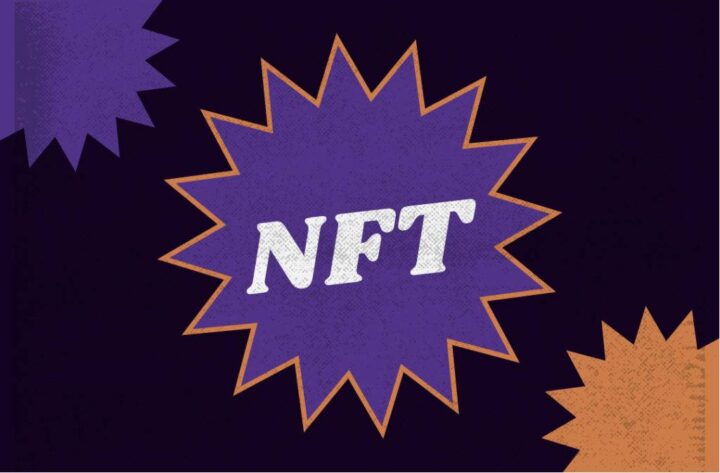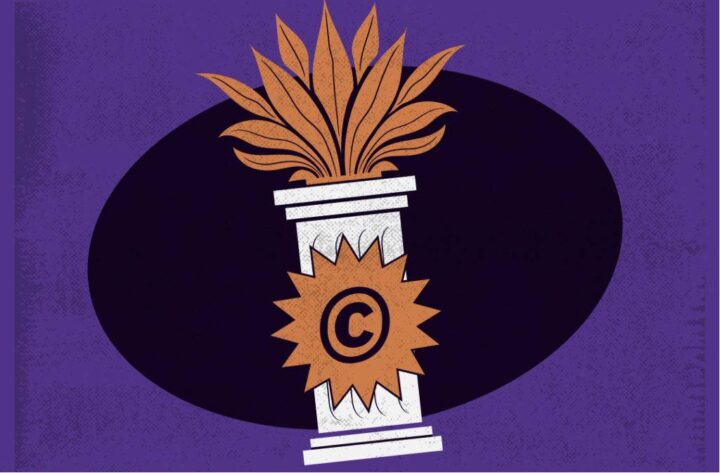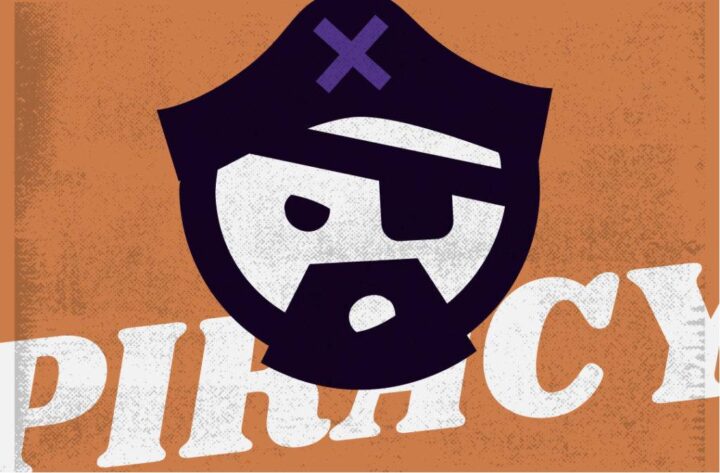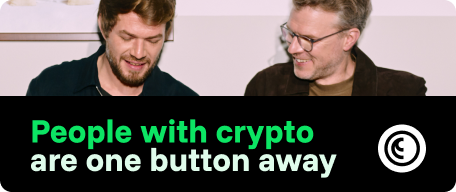Everything You Need to Know About NFTs

What Is an NFT and What Is It Good For?
An NFT is a non-fungible token. While 1 BTC or ETH is equal to any other unit of the same cryptocurrency or can be split into smaller units, each NFT is completely unique – it represents only itself and cannot be automatically exchanged. At the same time, an NFT can have a price determined by the market, but we will come back to that later.
An NFT is a digital certificate confirming the ownership of a particular digital asset. The token itself does not contain an artwork but only a link to it and a smart contract that defines the owner’s rights and ability to manage the asset. Information about all owners can be found on the blockchain network. NFTs were originally conceived as a technical means for authors to control their own works in the digital sphere, where piracy or intellectual property theft is a problem, but in practice, things turned out differently.
Read more: https://coinspaidmedia.com/business/what-are-nft-tokens-and-why-are-they-saving-art/
NFTs and Copyright
An NFT owner’s rights are specified in the smart contract and are usually limited to buying, owning, and selling. Thus, by purchasing an NFT, an investor does not become the owner of the exclusive rights to the object digitized in that way. Moreover, all such relationships are distributed and regulated only within a particular blockchain network.

According to the United States copyright law, “the creator of the original expression in a work is its author.” Therefore, it implies exclusive copyrights, the alienation of which requires a legal agreement between an author and a third party. Technically, the NFT terms may involve the transfer of such rights, but this agreement would be valid only within the blockchain network in which the token was created. Thus, the author of the original artwork reserves the right to make and sell copies, transfer rights by inheritance, receive royalties, etc. So far, there have been no legal precedents for the owner of an NFT to challenge the exclusive copyright of the original work’s creator.
Why Don’t NFTs Protect Authors?
An NFT does not protect authors as the ownership information is kept in a single blockchain network. There are dozens of these networks, with no connection between them and outside websites and apps, so “pirating” someone else’s work by digitizing it in NFT form can’t be stopped automatically.
The main reason for this is the fact that blockchain networks are decentralized by design. It is possible to create NFTs on dozens of related services, even using random images from the web. It is up to the author to monitor the appearance of his works on third-party services independently since there is no centralized control in this area and no real technical possibility to do so.
Piracy and NFTs
The surge of interest in NFTs and the lack of a centralized technical control led many fraudsters to start creating pirated tokens with other people’s content on a massive scale. This is a direct violation of intellectual property rights which are protected by law.
Read more about NFTs: https://coinspaidmedia.com/tag/nft/
In practice, no such cases went to trial. Each particular platform specialized in the generation of NFTs has its own administration that enforces regulations and takes action to protect the author’s rights. Examples of copyright protection tools include automated image recognition software, manual moderation, and a complaint system. The platforms’ rules explicitly prohibit piracy, so all these complaints are dealt with and satisfied quickly. After processing a complaint, the site administration can hide the “pirated” NFT, but it cannot be removed from the blockchain.

Quite a situation we have here. The creation of an NFT does not imply registration of copyright or any other rights. Likewise, buyers of such a token do not acquire any rights. “Minting” (or creating) of the token solely shows that a particular account, which may be anonymous, has recorded certain metadata in one of the NFT formats and has access to it.
This creates fertile ground for fraudsters on the one hand and all sorts of misunderstandings on the other. An NFT does not protect either authors or buyers because using a token outside of a particular platform can be seen as copyright infringement. For example, suppose a collector within the NFT gallery displays artworks that he bought in this way. In that case, the copyright holders can block his asset and sue the organizer for infringement of exclusive copyrights.
What Is the Use of an NFT Now?
Proto-NFTs already existed in the early 2010s, but the first NFT projects began to emerge in their current form in 2017. They were facilitated by the development of infrastructure and the technological base of decentralized apps and the general growth in value of cryptocurrency projects. The lion’s share of the credit goes to CryptoKitties, a game based on the Ethereum blockchain network. The game allows you to breed, sell and buy unique kitties implemented as NFTs. At the end of 2017, just one month after its release, digital kitties were already being sold for $100,000. This case has boosted the development of NFTs and the infrastructure associated with these tokens in general.
Read more: https://coinspaidmedia.com/news/nft-market-could-hit-97-6-billion-by-2028/
Here are two main reasons to buy an NFT:
- Exclusivity. An opportunity to record the ownership of the original artwork.
- Investment appeal. The value of an NFT grows by itself and in the context of general cryptocurrency prices increase.
The first reason is typical for collectors and fans. The second is a classic example of capitalist incentive – the constant search for profitable investments that will allow the investor to maintain and increase their profits.
Where to Buy and Sell NFTs?
Today there are many platforms where you can generate, sell or buy NFTs. Some specialize in specific items like trading game items, while others offer more general services. Almost all of them operate on the Ethereum blockchain network, so ETH is the main cryptocurrency for trading and commissions. As a rule, all platforms provide comprehensive information about NFTs, primarily the history of their transactions.
The most famous NFT services are:
- Zora.
- Rarible.
- OpenSea.
- SuperRare.
- CryptoPunks.
- Nifty Gateway.
- Foundation.
They differ in operational features and some technical characteristics, but generally, the services provided are identical. However, in 2021, an NFT can be even purchased at Christie’s auction. A case in point: Mike Winkelmann, a.k.a the digital artist Beeple, has sold his piece “First 5000 Days” for $69.3 million. It was both the first NFT sale at a major auction house and the most expensive NFT sale in history.
Case Study: Why a LeBron James GIF Sold for $387,600?
Dapper Labs is the developer of the aforementioned CryptoKitties. In the wake of their success, the company separated from Axiom Zen and focused on developing NFT assets. The next project, called NBA Top Shot, was a breakthrough. Users gained access to the app in September 2020, and by March 2021, Top Shot tokens had been sold for more than $230 million.
Basically, Top Shot captures the most meaningful moments of NBA games as GIF animations. These moments are combined into sets, each assuming a starting price as it contains unique moments of different significance, depending on what the fan prefers, or the star power of the featured players. Additionally, users can build collections by buying and selling individual Top Shots, doing so on the secondary market as well. In the spring of 2021, the Top Shot secondary market had a monthly turnover of about $1.8 million.
The project owes its popularity to several factors:
- The hype around cryptocurrency projects in general and NFTs in particular.
- Active marketing support in the U.S. by celebrities, such as Michael Jordan and Will Smith.
- The enormous popularity of the NBA in the U.S. and the globalization of the digital crypto market.
The project’s media and financial successes have contributed to the investment craze in the NFT space. The most legendary tokens are already fetching six-figure sums. No wonder that three of the most significant LeBron James moments were put up for auction for more than $200,000 (warning, some basketball slang ahead):
- Top Shot #26. James’ slam dunk from February 6, in which he performed the legendary “breakaway, reverse windmill, two-handed slam dunk.” This technique was popularized by Kobe Bryant at the dawn of his career in the same arena. The #26 serial number invokes the date of Bryant’s death – January 26, 2020.
As can be seen, the value of any NBA Top Shot NFT is shaped by the symbolism of the encoded numbers and moments, the exploitation of Kobe Bryant and LeBron James’ brands, the tragedy of the former, and the legendary status of both of them, as well as the brand recognition of the Los Angeles Lakers. The combination of factors creates special value for fans and collectors, who are willing to give huge sums of money for the opportunity to “own” the moment. Interesting fact: Top Shot #3, which captured the same slam dunk performed by LeBron in another game in the series, sold for $387,600 on April 16, setting a record for tokens of this type. - Top Shot #42. The gif shows LeBron in the 2019/2020 NBA season finale, half a step away from the Lakers’ 17th championship. Before that, the last time the Lakers won was the 2009/2010 season – it was Bryant who led the team to victory then, earning his fifth and final NBA title. James delivered the victory in honor of Bryant’s legacy. In 2020, Kobe Bryant would have been 42 years old, adding significance to the NFT’s serial number.
- Top Shot #41 is the first legendary LeBron NFT token. The moment depicts a slam dunk performed by James. Bryant was 41 years old at the time. Two days later, they were photographed together at the next Lakers game. It was the last photo of the athletes together.
As can be seen, the value of any NBA Top Shot NFT is shaped by the symbolism of the encoded numbers and moments, the exploitation of Kobe Bryant and LeBron James’ brands, the tragedy of the former, and the legendary status of both of them, as well as the brand recognition of the Los Angeles Lakers. The combination of factors creates special value for fans and collectors, who are willing to give huge sums of money for the opportunity to “own” the moment.











